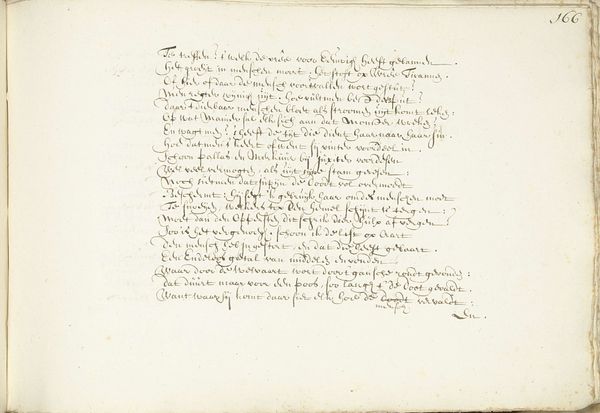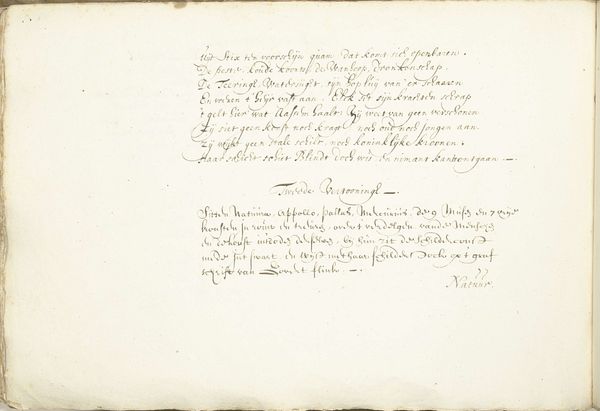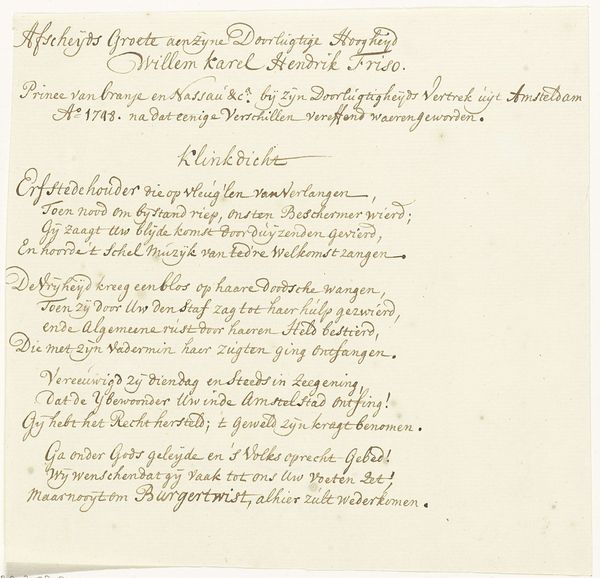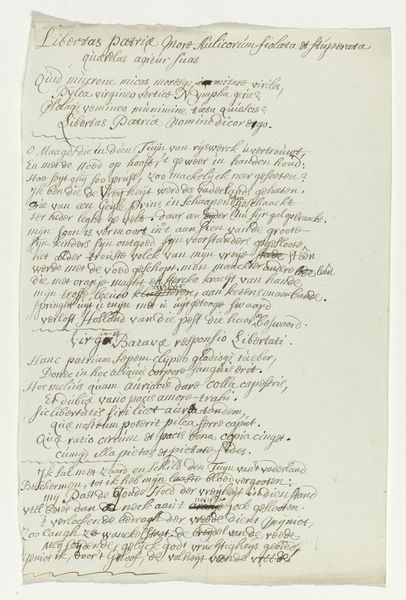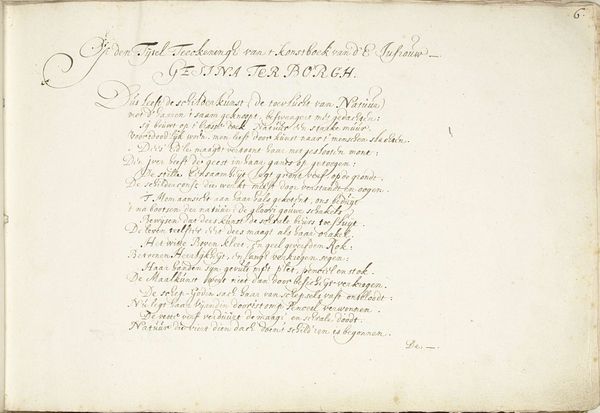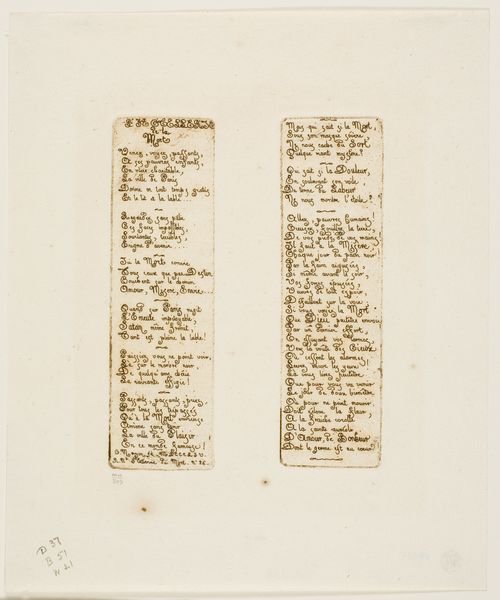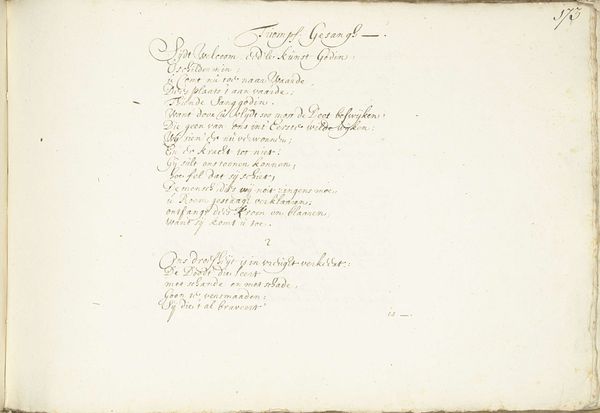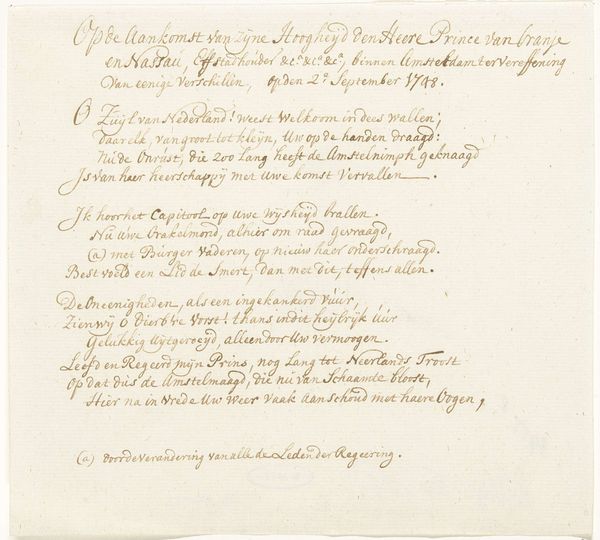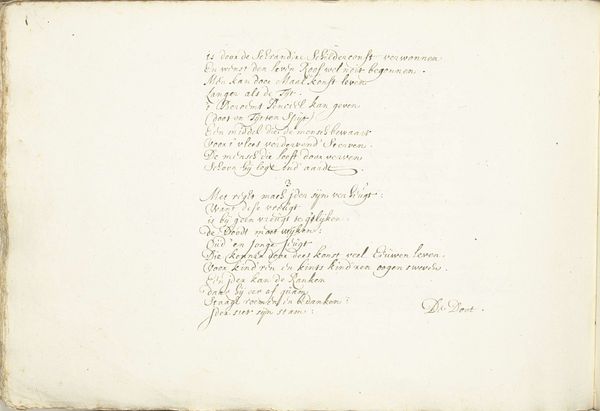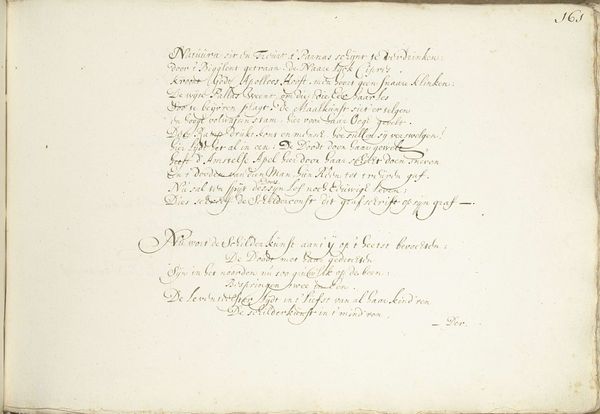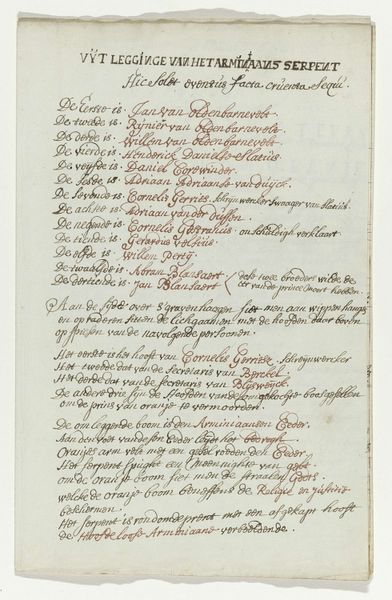
Dimensions: 63 × 126 mm (image); 63 × 126 mm (plate); 119 × 190 mm (sheet)
Copyright: Public Domain
Curator: Welcome. We’re looking at Charles Meryon’s etching and ink on paper, “L'Esperance (verse to accompany Pont-au-Change),” created in 1854. Editor: Immediately, I'm struck by the density of text. It’s cramped, almost claustrophobic. It conveys a feeling of confinement and unease. Curator: Yes, the composition itself mirrors that sentiment. Meryon uses tightly packed lines of script, which almost appear as a wall, trapping the viewer within its confines. The lettering is in French, of course; and the verses accompanying the depiction of the Pont-au-Change. Editor: And what of "L'Esperance" – Hope? Where does it figure into the social commentary, given the period? Curator: Meryon was a very meticulous and exacting artist and draftsmen; a devotee of Romanticism, his work is always underpinned with symbolism and strong formal qualities, especially evident in the graphic weight, balance, and stark contrast between the inked and negative space, something Romanticism favors as a technique. He masterfully plays with perspective, leading the viewer's eye through the labyrinth of verses, prompting critical consideration of its meaning and the poem's implications about a search for hope, indeed, the titular subject, or perhaps something ironic. Editor: It could be argued that this etching is almost a visual representation of social anxieties of its time, reflecting concerns of industrialization and urban alienation, particularly, a rapidly changing Paris in the mid-19th century and how the promise of societal evolution left so many people behind. Curator: Perhaps Meryon suggests here that hope can also imprison you and blind one from the realities of their time, instead focusing on utopian promises that can never be truly reached, creating only frustration and, again, feelings of hopelessness when people feel stuck with no control or outlet. It’s a stark reminder that optimism without pragmatism can indeed become a trap of its own making, quite in contrast to a light-hearted read for any wandering visitor, but an imperative reality nonetheless. Editor: Thank you, both for illuminating what these historical objects meant for those who lived back then and also providing ways for viewers today to link such insights and observations back to today’s culture. Curator: I hope our audience members will find inspiration from Meryon’s meticulous study of text and Romantic values.
Comments
No comments
Be the first to comment and join the conversation on the ultimate creative platform.

